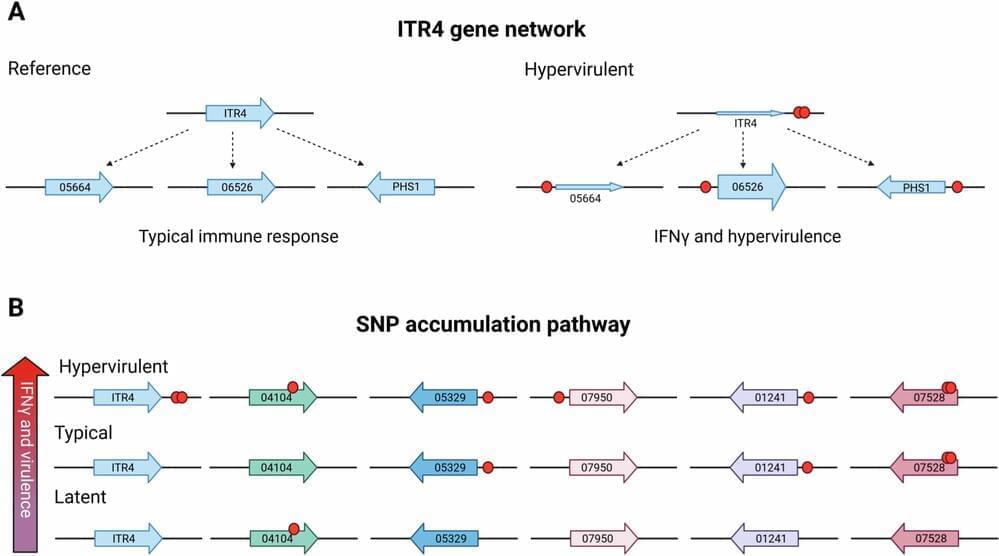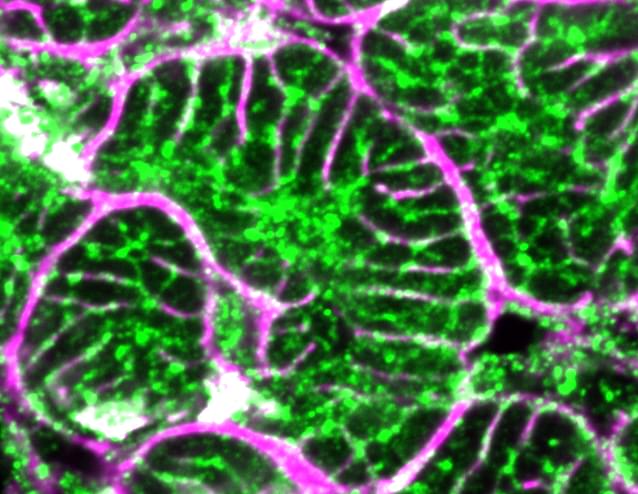Scientists have found a new link between diet and colon cancer risk that could change how we fight the disease with more targeted treatments.



Ultimately, the goal is to find ways to stop deadly disease caused by Cryptococcus neoformans from developing in humans and animals. But until that time, finding new and better ways to treat already existent disease and its symptoms is a high priority.
The laboratory of Kirsten Nielsen in the Center for One Health Research has taken a step toward improved treatment of Cryptococcus, completing a six-year study to examine the virulence of 38 clinical isolates from various strains of Cryptococcus. The results are published in Nature Communications.
“The question that we’ve been addressing is: Can we predict severe disease outcomes in patients?” said Nielsen, professor of microbiology and immunology in the Virginia-Maryland College of Veterinary Medicine. “If we can predict disease outcome, then we can treat patients better. In these studies, we identified not just the genes that allow Cryptococcus to cause disease, but also the gene alleles that allow it to cause more disease or less disease.”

Precious few garments have been made of spider silk. In 2012, a cape and shawl made from natural spider silk were displayed at the Victoria and Albert Museum, where visitors learned that the garments were the result of a unique project that spanned eight years and involved the harvesting of silk from 1.2 million spiders. In 2019, a rather less painstaking project utilized fibroin, the protein found in natural spider silk, to fabricate an outerwear jacket, North Face’s Moon Parka. Starting with fibroin meant that silk could be sourced from genetically modified bacteria, which are easier to work with than spiders. Nonetheless, the Moon Parka, which takes its name from the word moonshot, was never meant to be mass produced. It was available by lottery for just a limited time.
Museum pieces and moonshots are hardly synonymous with “mass production.” Is there another way to generate spider silk–based textiles, one that has more commercial potential? Yes, according to Kraig Biocraft Laboratories, which uses transgenic silkworms to produce lines of recombinant spider silk. The company plans to produce up to 10 metric tons of spider silk in 2025. Production of actual spider silk lines on this scale would allow textile manufacturers to test the silk on their own equipment.
It’s not just textiles that may benefit. Recombinant spider silk’s tensile strength, weight, and durability make it attractive for myriad applications, including tissue scaffolds and sutures in the biomedical field, as well as textiles and ballistic materials.
Delivering Innovative, Compassionate And Accessible Patient Care — Robert Stone, CEO — City of Hope & Dr. Marcel van den Brink, MD, PhD, President, City of Hope Comprehensive Cancer Center.
Robert Stone is the CEO of City of Hope (https://www.cityofhope.org/robert-stone), a premier cancer research and treatment center dedicated to innovation in biomedical science and the delivery of compassionate, world-class patient care. A seasoned health care executive, he has served in a number of strategic decision-making roles since he joined City of Hope in 1996, culminating with his appointment as president in 2012, CEO in 2014, and as the Helen and Morgan Chu Chief Executive Officer Distinguished Chair in 2021.
Mr. Stone has J.D., University of Chicago Law School, Chicago, IL.
Mr. Stone’s strategic acumen, empathy and visionary leadership have driven City of Hope’s rapid evolution.
As an independent institution dedicated to advancing the fight against cancer and diabetes, City of Hope is accelerating opportunities for high-impact discovery and ensuring that patients around the world have access to the most advanced therapies. Recent examples include a groundbreaking alliance in precision medicine with the Translational Genomics Research Institute (TGen), a leader in genomic analysis and bioinformatics; leadership in CAR T cell therapy research and therapy; and an innovative program to offer cancer support services to the employees of some of American’s largest employers, regardless of geography.

A new UC Davis Health study has uncovered how Salmonella bacteria, a major cause of food poisoning, can invade the gut even when protective bacteria are present. The research, published in the Proceedings of the National Academy of Sciences, explains how the pathogen tricks the gut environment to escape the body’s natural defenses.
The digestive system is home to trillions of bacteria, many of which produce short-chain fatty acids (SCFAs) that help fight harmful pathogens. But Salmonella manages to grow and spread in the gut, even though these protective compounds are present. The study asks: How does Salmonella get around this defense?
“We knew that Salmonella invades the small intestine, although it is not its primary site of replication. The colon is,” said the lead author of the study Andreas Bäumler is a UC Davis distinguished professor and vice chair of research in the Department of Medical Microbiology and Immunology.
Humanity’s quest for answers has a new ally: Google’s Willow chip — a quantum chip that outpaces the fastest supercomputers by septillions of years! Imagine solving problems regular computers take years for—like creating life-saving medicines, predicting weather, or designing tech we haven’t dreamed of yet. But with great power comes challenges: high costs, logistics, and even risks to cybersecurity. The quantum revolution has begun, but the big question is—how will we use this power? Palki Sharma tells you.
Google | willow | quantum chip | firstpost | world news | news live | vantage | palki sharma | news.
#google #quantumchip #willow #firstpost #vantageonfirstpost #palkisharma #worldnews.
Vantage is a ground-breaking news, opinions, and current affairs show from Firstpost. Catering to a global audience, Vantage covers the biggest news stories from a 360-degree perspective, giving viewers a chance to assess the impact of world events through a uniquely Indian lens.
The show is anchored by Palki Sharma, Managing Editor, Firstpost.

Researchers at the U.S. Department of Energy’s (DOE) Argonne National Laboratory have developed and demonstrated an innovative set of methods to evaluate long-term aging in real-world battery cells. The methods, described in a recent paper, are based on a phenomenon called nuclear magnetic resonance (NMR), commonly used in medical imaging. This is the first-ever NMRspectroscopy capability that can track in fine detail how the chemistry of commercial pouch battery cells evolves over years of operation.
Argonne develops a novel method that uses nuclear magnetic resonance spectroscopy to characterize the chemical evolution inside battery cells over years of operation.

A new gene therapy can reverse the effects of heart failure and restore heart function in a large animal model. The therapy increases the amount of blood the heart can pump and dramatically improves survival, in what a paper describing the results calls “an unprecedented recovery of cardiac function.”
Currently, heart failure is irreversible. In the absence of a heart transplant, most medical treatments aim to reduce the stress on the heart and slow the progression of the often-deadly disease. But if the gene therapy shows similar results in future clinical trials, it could help heal the hearts of the 1 in 4 people alive today who will eventually develop heart failure.


Just as the metaverse industry finally began its breakthrough, ChatGPT’s launch in November 2022 proved a technological avalanche. Amid post-pandemic economic pressures, companies pivoted away from metaverse aspirations to AI adoption, seeking immediate returns through automation and virtualization.
Apple’s 2023 entry into the space with Vision Pro VR headset has similarly faced challenges. At $3,499, with limited content and a sparse developer ecosystem, Apple struggles to find its market. Early projections suggest initial production runs of fewer than 400,000 units.
What if we’ve been looking for the metaverse in the wrong places? While Meta, HTC and Sony have so far struggled to establish their vision of a VR-first digital world, gaming platforms like Roblox quietly built what might be the actual metaverse.